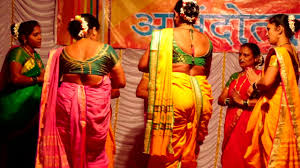Puppets with reasons-PART-II


Using puppets in the classroom
Teaching through puppetry is a learning experience for the teachers first then to the learners. Learning through play and play way methods are basic essentials in children's education, as this helps them in development of motor skill coordination, bring out special traits and hidden potentials in children. It is rightly said, each child is unique and special. In this process ‘Puppets’ can kindle imagination and interactive creative play. They help in streamlining the narration part even to the most hesitant and inactive child.
Puppets help in focusing. They act as best model in training the students with attention problem. They help in retention of span of attention. Research and studies conducted in west has proved that puppet plays and puppet way of teaching has helped the teachers to identify problems not only related to academic learning aspects but more about sibling relations and sibling rivalries, loneliness, relationship with parents, interests, likes and dislikes.
Are puppets child friendly? One could easily question what kind of ‘sadness’ children face?
With the earlier statement of each child is unique, the uniqueness is incomparable. In a family with two children, both the children are not the same for parents. Both would be behave differently for a given situation. In some case younger child would be performing the given task then the older one. In certain cases especially is seen predominantly among urban kids who are confined to themselves, with no scope for outdoor games and activities are seldom able to communicate and mingle with other kids. They learn to remain aloof and remain so as they grow.
Today modern television and television channels are the only stress busters not only for children even for elders. The repetitive programmes irrespective of special programmes played on cartoon, Pogo and other channels meant for children are shrinking the scope of imagination. Children are given the frame work and boundaries demarcated for the imagination and they also tend to imagine and visualize the same. This block to visualize beyond the given frame work. This scope to visualize beyond the limitation is possible through puppets. It is our wrong perception that imagination is only for children, but it is something all of us strive at one point or the other, for it is through imagination that development expectation and creations are origin.
‘Puppets’ are definitely child friendly. They not only share happiness but also share sadness. They share good, bad, evil, naughty and shy. Primary school teachers can in fact use puppets as ‘stimulant’ in exploring the constructive converse about lessons- be it general science or social science.
How puppets can assists teachers in teaching?
Puppets can assist teachers in identifying children with special educational needs. They bring story into life by giving sufficient scope for imagination. The movements of hands and mouth are best way to inspire and motivate.
Right from teaching language phonetics, syntax formation, tenses and narration, puppets are better teacher to children. Here, through exchanging role play-puppets as learners and children as teachers help children to learner better and with accuracy. On the other hand, bigger size human puppets with glove hands and fingers used in combination with music, dance, and help children in group activities. The outcome of using puppets in classroom will help in sharing of ideas in the group, appreciating ideas, welcoming new thoughts, reciprocating, putting down the ideas, learning new vocabulary, expression, and acceptance and so on. Similarly, with the help of puppets concepts of fractions, decimals, and measurements and so on can teach better way to children. Beyond all this children learn to contribute individually. This helps in individual reasoning skills and development
From one the workshops conducted for teachers to use puppets in classroom stated that puppets are good source to address ‘hygiene, cleanliness and behaviour’ among children. Again, there is no correct or incorrect way of using puppets. Similarly puppets can get characterized in to any form right from opaque, transparent, from the abstract to the solid and get into that character easily.
Again, teachers have to bear in mind that slow introduction of puppets to the class, introducing to all children, shaking hands with them and creating a sense of identity would strengthen the classroom activity. Again it is essential to make sure that puppets are still part of the learning process even when not being used. Let the puppets take a seat and be part of the group. This generates more from children more arguments and discussions too.
To conclude
In modern times, restriction of ‘Puppetry for puppetry’ limits its scope; instead application of puppets with reasons enhances its scope and utility. Teachers as puppeteer not only become responsive of the central focal point of the subject but also find ways to deliver it better to the students. This requires ample planning, preparation and preparedness to welcome both pros and cons of application of puppetry. Lastly, puppets help teachers to learn to listen in an unbiased way to the queries of students.
This article has been published in www.teachersdot.com (Monthly school magazine in English and Tamil) Vol. 1 Issue 3 February 2011










Comments